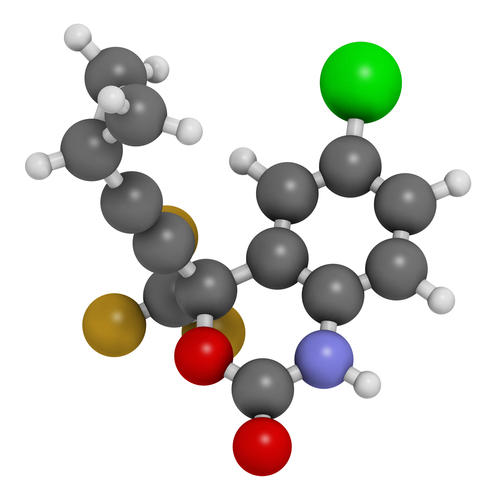New Orally Available Compound Seen to Increase Activity of Human Parathyroid Hormone Receptor 1

A new, small, orally available compound has the potential to regulate abnormal calcium levels often seen in patients with hypoparathyroidism, according to preclinical research.
The study, “Development of a Novel Human Parathyroid Hormone Receptor 1 (hPTHR1) Agonist (CH5447240), a Potent and Orally Available Small-Molecule for Treatment of Hypoparathyroidism,” was published in the Journal of Medicinal Chemistry.
Hypoparathyroidism occurs either when the parathyroid gland fails to produce enough parathyroid hormone (PTH) or when tissues, such as in the bone or kidneys are insensitive to PTH.
PTH is important for maintaining blood calcium and phosphate levels. It acts through the parathyroid hormone receptor 1 (PTHR1) found on the surface of cells in tissues such as in the bone or kidneys.
For patients with hypothyroidism, where calcium and phosphate levels are often low, treatment usually involves taking extra calcium and vitamin D supplements. However, long-term vitamin D supplements can have side effects, including impaired renal function.
Another treatment approach, recombinant PTH, can help maintain blood calcium levels without the potentially dangerous side effects associated with vitamin D, but it requires subcutaneous injections that make it an invasive treatment approach. Therefore, an orally available option is needed.
Orally available small-molecule PTHR1 agonists will activate the PTHR1 receptor, making it more sensitive to PTH and better able to regulate calcium levels.
Researchers conducted what is known as high-throughput screening, in which scientists looked at more than a million compounds in the laboratory and their capacity to activate the PTHR1 receptor.
One compound, in particular, was able to increase the activity of a specific enzyme called cAMP, which occurs upon specific PTHR1 activation.
To optimize the compound and improve its chemical and biochemical properties, researchers changed its chemical structure. Then, they evaluated how these changes affected the biochemical function of the compound, which was named CH5447240, or compound 14l.
Finally, CH5447240’s pharmacokinetics — how a drug affects an organism until it is expelled — were studied in female rats. When orally delivered, the compound was seen to be active and to increase calcium levels for longer periods compared to subcutaneous administration.
In a rat model of hypoparathyroidism in which calcium levels are low, oral treatment with CH5447240 increased serum calcium levels in a dose-dependent manner.
Although further drug optimization is required to minimize possible side effects, the authors believe that this compound is “a candidate drug for patients with hypoparathyroidism, and being orally available, was thought to have great benefit for patients who have to take drugs over a long period.”






